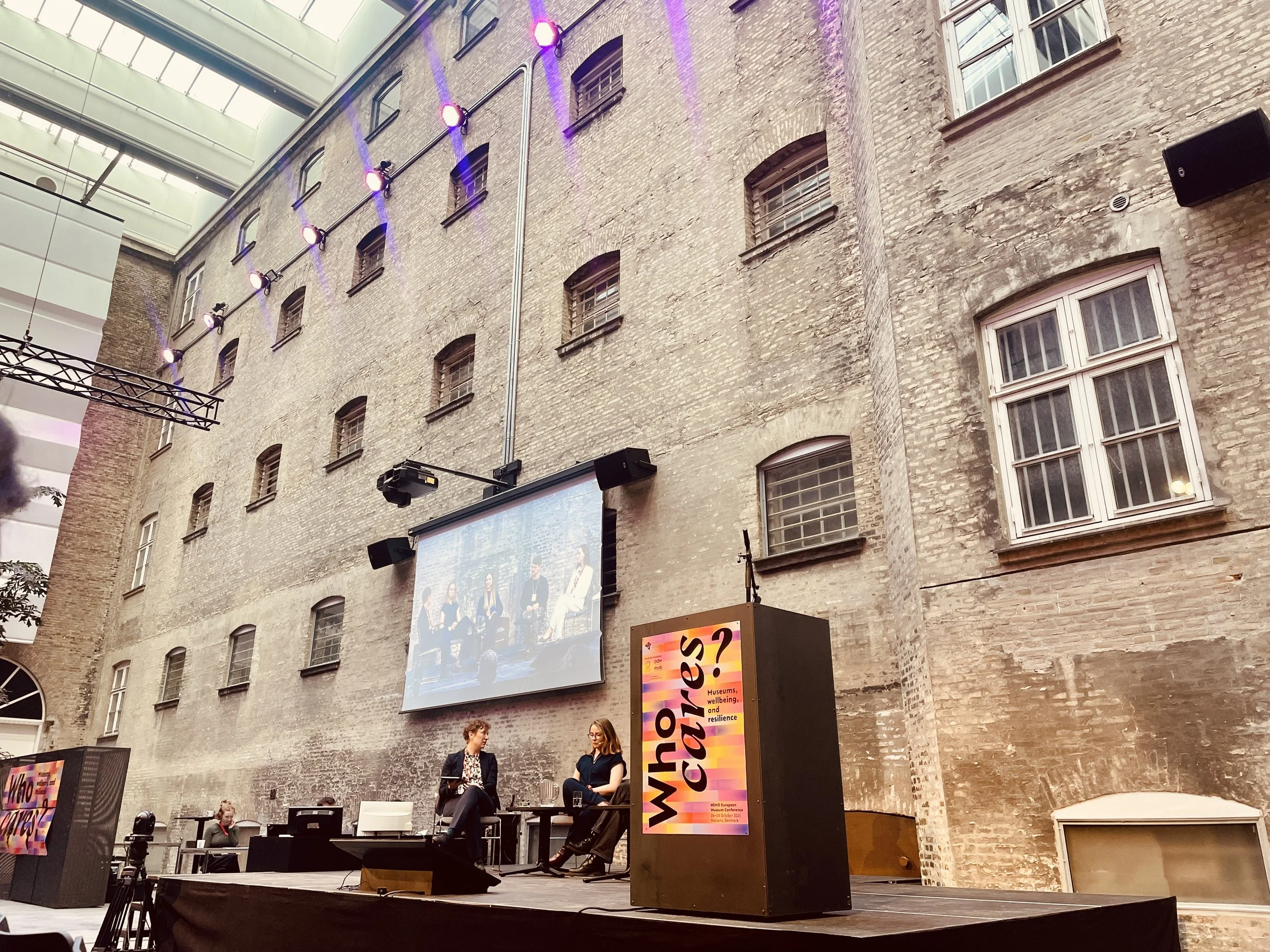This week I attended the Network of European Museum Organizations (NEMO) conference in Horsens, Denmark. The theme of the conference was Who Cares? Museums, wellbeing and resilience and attracted over 200 attendees from 37 countries (!)
The opening question is cheeky and provocative. You can read it two ways: a shrug your shoulders not-my-problem mentality or an empathic question inquiring…who really cares for people in vulnerable situations?
I work with museums in the U.S. on the topics of wellbeing and resilience, so I was very curious to hear whose well-being the attendees would be referring to, how they defined it, and what it means to be resilient. Here’s what I learned:
Well-Being
The sessions primarily showcased how museums are supporting the wellbeing of their audiences and communities. Well-being was discussed as both a strategy (dancing in the galleries with teenagers, slow looking with dementia patients and their caregivers) and an outcome (these programs increase self-esteem, reduce social isolation, and increase communication). There were stellar examples, especially among Northern European countries, of collaborating with hospitals and medical training programs (Latvia), or establishing research (Denmark) institutes dedicated to arts and health.
With 37 countries in attendance, not all museums are at a national level of collaboration. If Northern European countries have a matured system integrating arts and health, Southern and Eastern European countries are still in their infancy. During one of the breaks I chatted with an attendee from Italy: the healthcare system is broken in southern Italy. How do I go into a hospital that’s overcapacity and short on doctors and say ‘you should prescribe a museum visit!’ This person wasn’t giving up - in fact their future PhD is going to explore the topic of arts and health - but at this point, he was simply seeking smaller, feasible, realistic steps.
Regardless of the starting point, museums are poised to meet this moment. Since the pandemic when museums responded to the social isolation and stress of the shutdown through digital programs, lectures, meditations, and myriad at-home activities, we have been sharpening our ability to rapidly respond to the needs of our visitors. The presentations I saw are building on evidence and experience to creatively support the wellbeing of their communities.
To adapt, respond, and grow through a crisis is the definition of resilience.
While I didn’t hear this word as explicitly as wellbeing throughout the conference, I repeatedly saw museums demonstrate their ability to listen, reflect, research, adapt, pivot. The presentations discussed models of sustainability and planning for the future. These qualities make each of the institutions resilient.
However, common challenges persist: there is never enough funding. Politicians need convincing. The cultural contexts within which each museum operates are different. For better or worse, museums must continually justify their value through economic impact. Social impact. Audience research.
Yet, museums do not give up.
Museums see themselves as being critical partners in helping solve the biggest problems of our time. They are resilient institutions so that they can promote wellbeing in our audiences and communities.
So, who cares? Museums do.
***
Two lingering questions:
Art museums dominated the presentations. Where do history, science, or natural history museums fit into this picture? Do they answer the question of well being and resilience differently? Do they demonstrate care in other ways with different types of partnershis? Or, are they tackling other topics like dialogue, politics, and climate change?
How do museums make the case to politicians that they are partners in solving these problems? And, how do they do that without compromising too much of their own mission?

